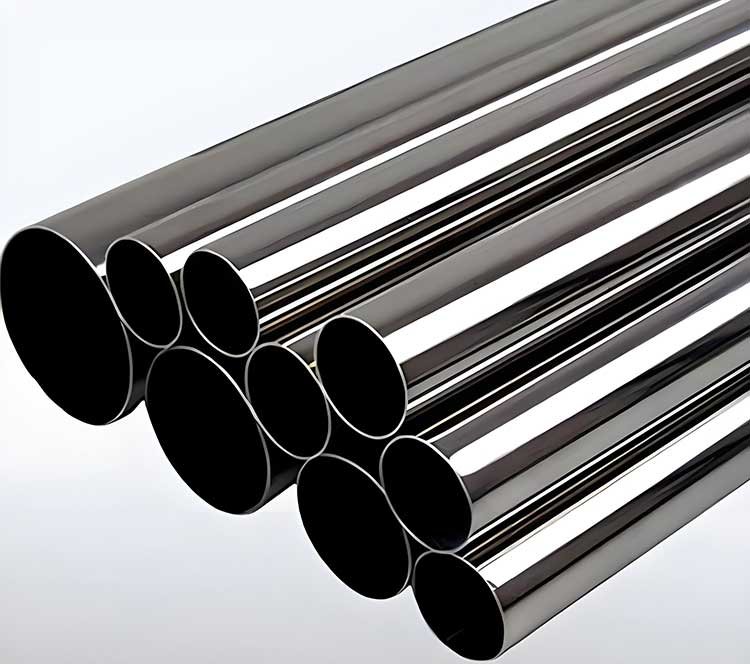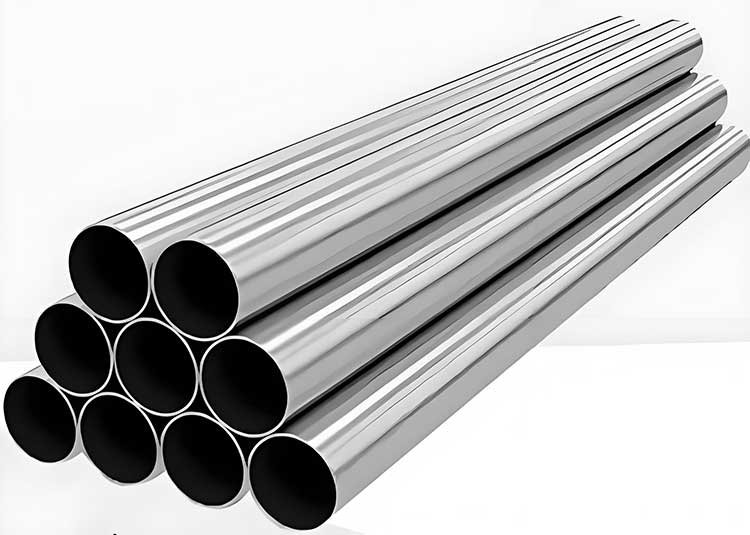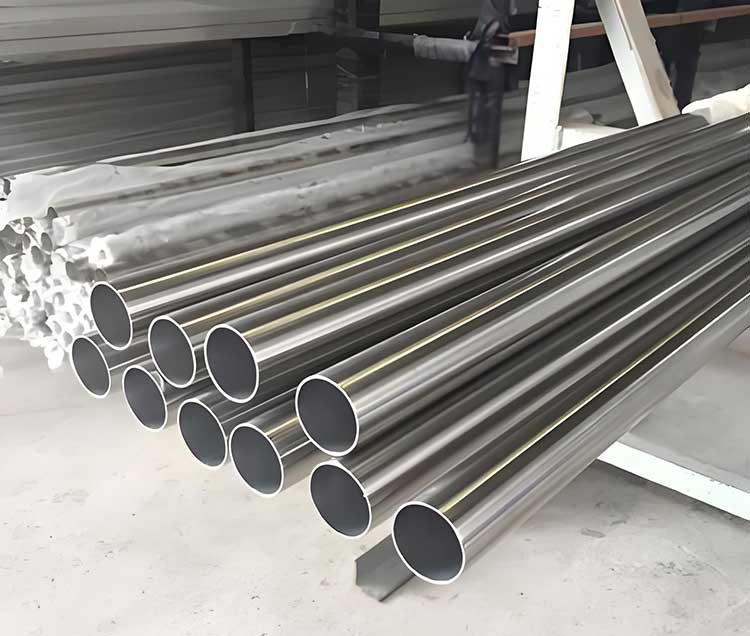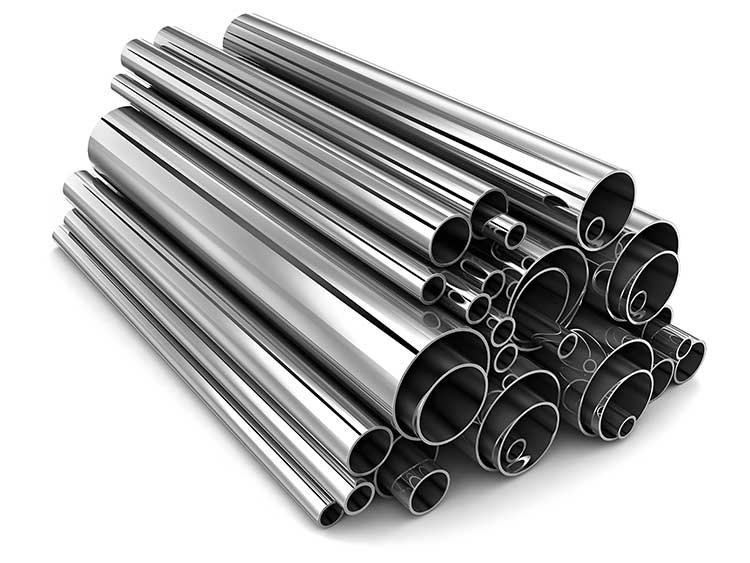Stainless steel pipe are widely used in various industries, from petrochemicals to food processing, from construction to electronics. However, faced with a wide variety of stainless steel industrial pipe products on the market, choosing the right one is a challenge for many users. The correct selection not only affects the quality and safety of the project, but also its cost and benefits. This article will provide a guide to selecting stainless steel industrial pipes, helping you find the product that best suits your needs among the numerous options.
Stainless steel pipe material type

304 stainless steel pipe
304 stainless steel pipe offers excellent corrosion resistance and formability. Containing approximately 18% chromium and 8% nickel, it maintains good performance in normal atmospheric and mildly corrosive environments. It is commonly used in food processing equipment, architectural decoration, and general industrial piping.
316 stainless steel pipe
Molybdenum is added to 304 to enhance its corrosion resistance in harsh corrosive environments, especially its tolerance to chloride ions. It is suitable for applications with high corrosion resistance requirements such as marine environments, chemical industries, and pharmaceutical industries.
2205 duplex stainless steel pipe
It has a dual-phase structure of ferrite and austenite, combining high strength with good corrosion resistance. Its yield strength is approximately twice that of ordinary austenitic stainless steel. It is widely used in projects requiring both strength and corrosion resistance, such as oil and gas extraction and seawater desalination.
Manufacturing process

Seamless pipe manufacturing process
Seamless pipes are hollow tubes made from solid billets through perforation and other processes. They are characterized by uniform wall thickness and seamless welds, high strength and pressure resistance, making them suitable for harsh operating conditions such as high pressure, high temperature, and high corrosion.
Welded pipe manufacturing process
Welded pipe is made by welding steel strips or plates. Depending on the welding method, it can be divided into straight seam welded pipe and spiral welded pipe. Welded pipe offers high production efficiency and low cost, but the performance of the weld seam may be relatively weak. It is suitable for applications with general pressure and corrosion requirements.
Selection considerations

(1) Usage environment
Corrosive Environments
If the pipe is used in a highly corrosive environment, such as a chemical plant or coastal area, a material with good corrosion resistance, such as 316 stainless steel or 2205 duplex stainless steel, should be preferred. Also, factors such as the type, concentration, and temperature of the corrosive medium should be considered. For example, in environments with high chloride ion concentrations, 316L stainless steel (a low-carbon version of 316 stainless steel) offers better pitting corrosion resistance.
Temperature Environment
For high-temperature environments, it’s important to choose a material with excellent high-temperature strength and oxidation resistance. For example, 310S stainless steel pipe, with its high chromium and nickel content, maintains excellent performance at high temperatures, making it suitable for high-temperature applications such as heating furnaces and heat treatment equipment. However, for low-temperature environments, the pipe’s low-temperature toughness must be considered to avoid brittle fracture.
Pressure Environment
Select appropriate pipe wall thickness and diameter based on the operating pressure of the piping system. For high-pressure systems, choose seamless pipe or welded pipe with thicker walls, and ensure the pipe’s pressure rating meets the required requirements. Use pressure calculation formulas or refer to relevant standards to determine the appropriate pipe specifications.
(2) Fluid characteristics
Fluid Type
If conveying liquids, consider factors such as viscosity, density, and corrosiveness. For highly viscous liquids, choose pipes with larger diameters to reduce flow resistance. If conveying gases, consider the flow rate and pressure loss.
Flow Rate Requirements
Select an appropriate pipe diameter based on the required flow rate of the fluid. Excessively high flow rates may cause increased pipe wear and pressure loss, while excessively low flow rates may cause fluid sedimentation within the pipe. Generally speaking, different types of fluids have their own suitable flow rate ranges, which can be determined by referring to relevant engineering manuals.
(3) Connection method
Welding Connections
Welding is a commonly used connection method, offering a secure connection and excellent sealing. It is suitable for applications requiring a high level of sealing, but the welding process is demanding and requires specialized welders.
Threaded Connections
Threaded connections are easy to install and are suitable for low-pressure, small-diameter piping systems. However, threaded connections offer relatively poor sealing properties and require the use of sealing materials to ensure a secure seal.
Flange Connections
Flange connections facilitate disassembly and maintenance, making them suitable for piping locations that require frequent disassembly. However, flange connections are more expensive and take up more space.
(IV) Cost factors
Pipe Prices
Prices for stainless steel industrial pipes vary significantly depending on the material and specifications. When selecting a pipe, consider the appropriate material based on your project budget. Generally speaking, 304 stainless steel pipes are relatively inexpensive, while 2205 duplex stainless steel pipes are more expensive.
Installation Cost
Different connection methods and manufacturing processes affect installation costs. For example, welded connections require specialized welding equipment and welders, resulting in relatively high installation costs. Threaded and flanged connections, on the other hand, are relatively simple to install and offer lower costs.
Maintenance Costs
Consider the pipe’s service life and maintenance requirements. Pipes with good corrosion resistance have a long service life and relatively low maintenance costs. However, some corrosion-prone pipes may require regular maintenance and replacement, increasing maintenance costs.
Selection steps

Clarify Requirements
First, clearly define the piping system’s intended use, operating conditions, and performance requirements. For example, what fluid will it transport, what operating pressure and temperature are required, and what are the corrosion resistance and strength requirements.
Initial Material and Process Selection
Based on factors such as the operating environment and fluid characteristics, initially select the appropriate material and manufacturing process. Refer to the material classifications and characteristics discussed previously, as well as the applicable applications of different processes.
Determine Specifications and Dimensions
Calculate the appropriate pipe diameter and wall thickness based on parameters such as the fluid flow rate, velocity, and pressure. Use relevant formulas or consult an engineering manual. Also, consider standard pipe specifications and choose standard pipes whenever possible to reduce costs and procurement difficulties.
Cost Assessment
Evaluate the costs of the initially selected pipe materials, including price, installation, and maintenance costs. Select the lowest-cost option while ensuring performance requirements are met.
Заключение
Selecting stainless steel pipe requires comprehensive consideration of multiple factors. When selecting, it’s crucial to fully understand the operating environment, fluid characteristics, connection methods, and cost, and follow a comprehensive selection process. Proper selection ensures safe and reliable piping system operation while reducing project costs and maintenance expenses.